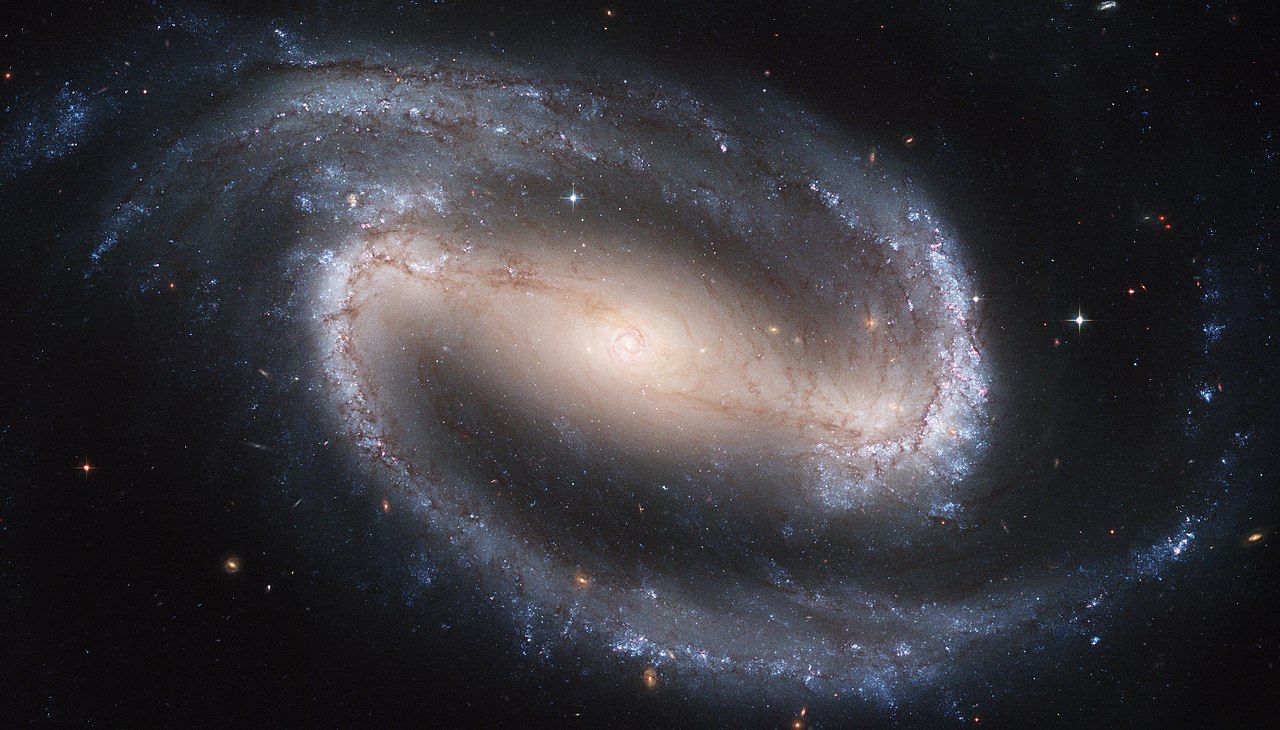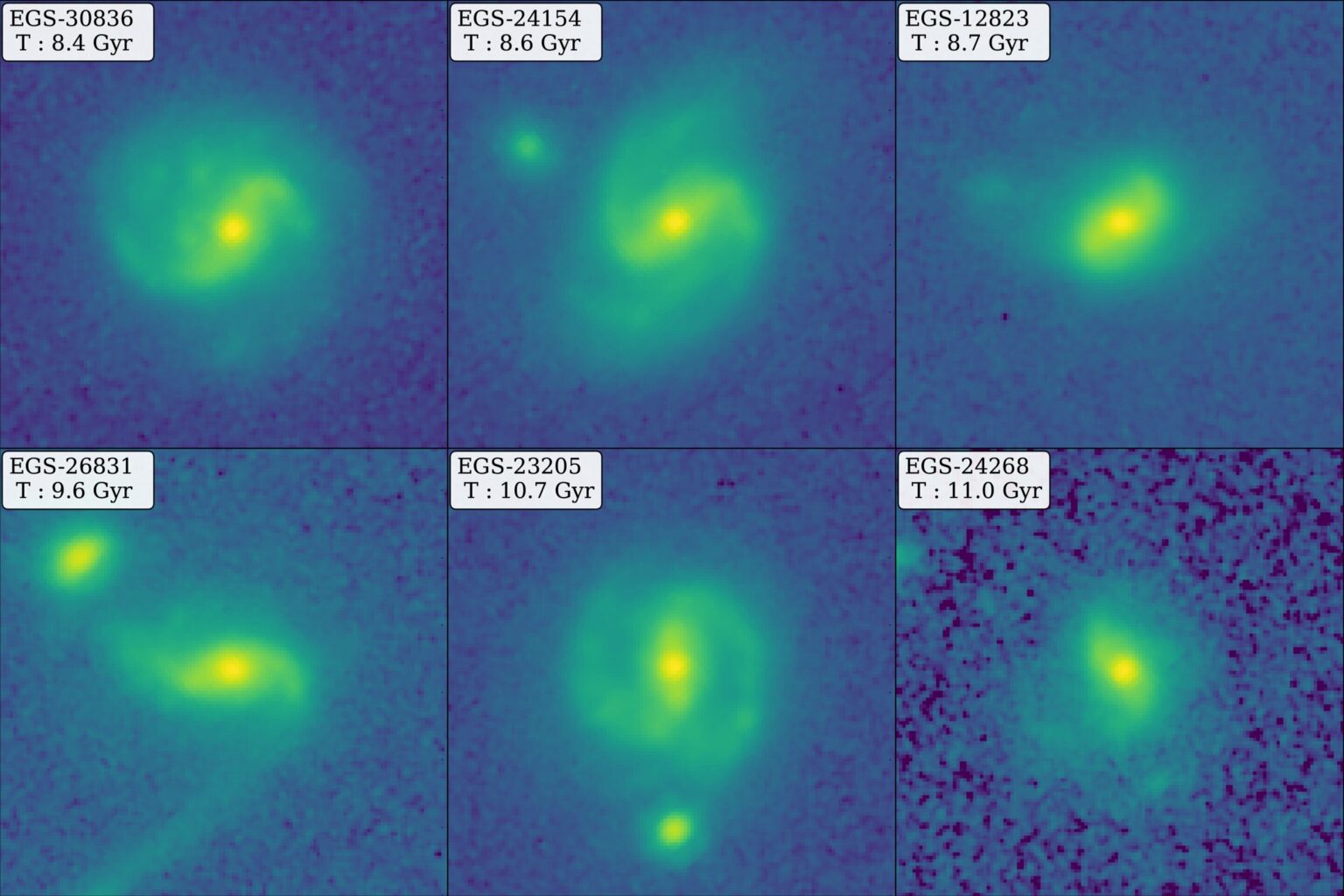The James Webb Space Telescope showed spiral galaxies with bars that existed 11 billion years ago. Scientists believe that due to this, they should accelerate star formation due to a significant influx of matter into the central regions.

Galaxies with bars in the early Universe
Scientists from the University of Texas at Austin, working with data from the James Webb Space Telescope (JWST), have found several spiral galaxies with bars, which age reaches 11 billion years. These objects are very similar to the Milky Way as we know it now and contain a bar — a very bright and dense formation of stars that extends from the centers of galaxies to their surroundings.
The first such galaxy called EGS-23205 was found on the Hubble Space Telescope images. But on them it looks just a blur. The JWST has a much larger mirror and can collect light better. In addition, it looks at the world in the mid-infrared range, which makes it better to see through cosmic dust.
It was thanks to these properties that the researchers found a bar in the EGS-23205, and this came as a surprise. It was thought that these elements could arise at later stages of evolution than a quarter of the present age of the universe.
Later, scientists discovered another galaxy EGS-24268 with a bar. Its age also reached 11 billion years. Then they manually processed a bunch more JWST images and discovered four more similar star systems, which age exceeded 8 billion years.
Why are bars important?
The bars in galaxies are more important than, for example, the spiral structure, which they may lose over time. These formations are a kind of cosmic roads along which matter from the edges of the galaxy gets to their center.

It is there that supermassive black holes are located, which entail perturbation and star formation in these regions. The main reserves of matter for this purpose are mainly located on the periphery of stellar systems.
The physical processes leading to the very early formation of bars in galaxies have still to be understood by scientists. But it is clear that they create a new path to the evolution of stellar systems, accelerating star formation by 10-100 times.
According to phys.org
Follow us on Twitter to get the most interesting space news in time
https://twitter.com/ust_magazine
